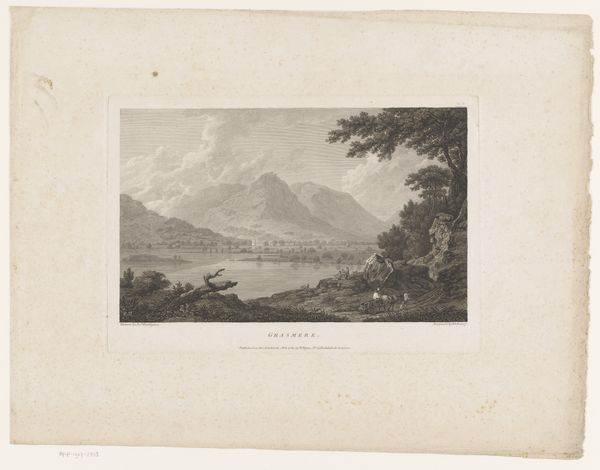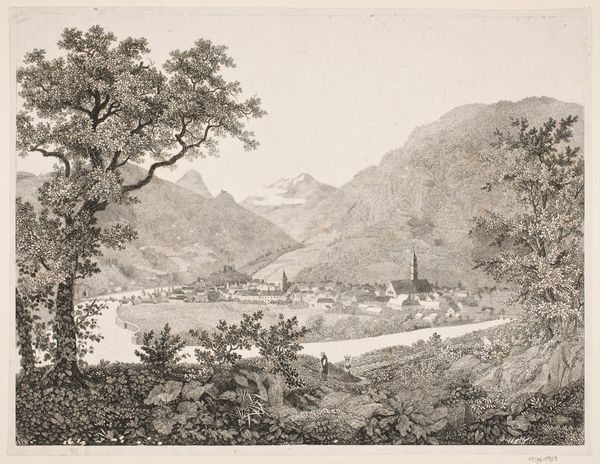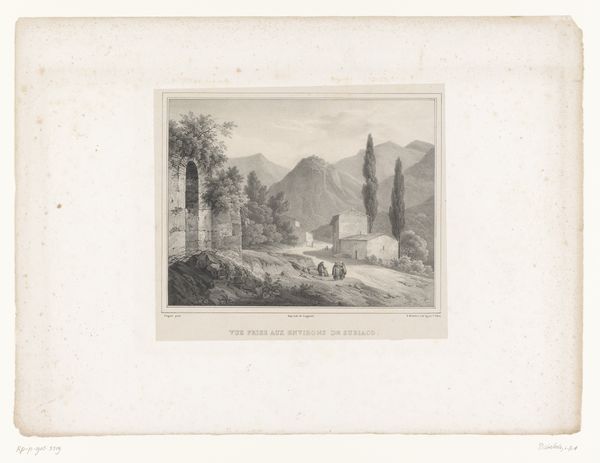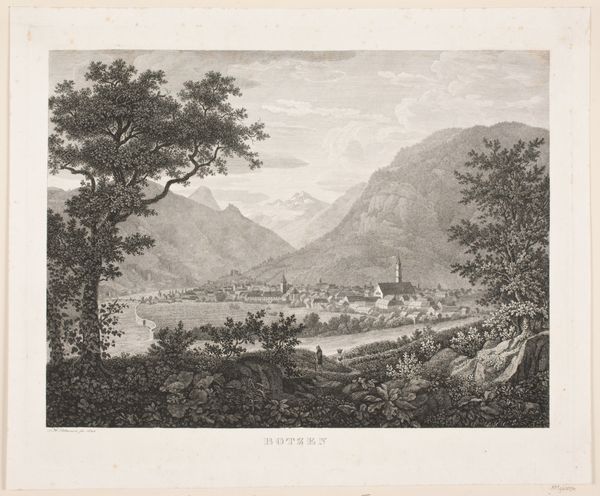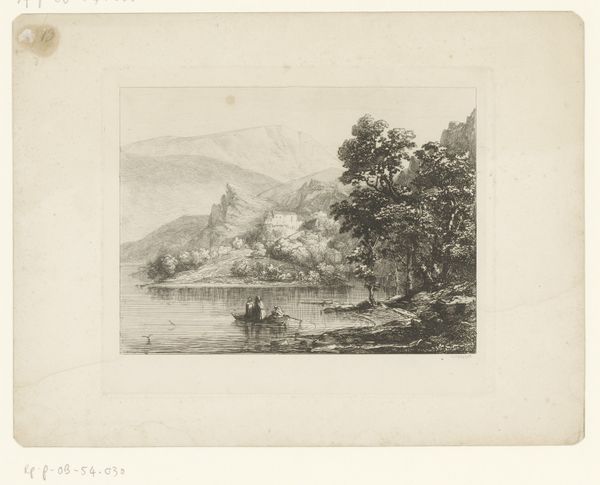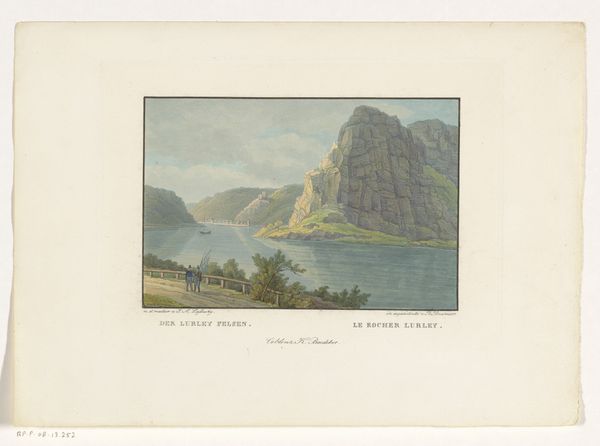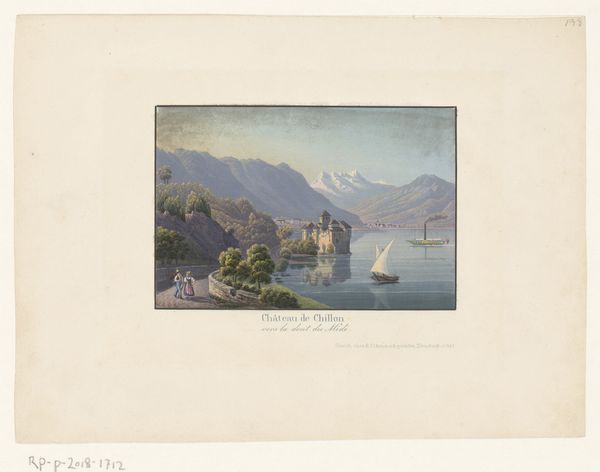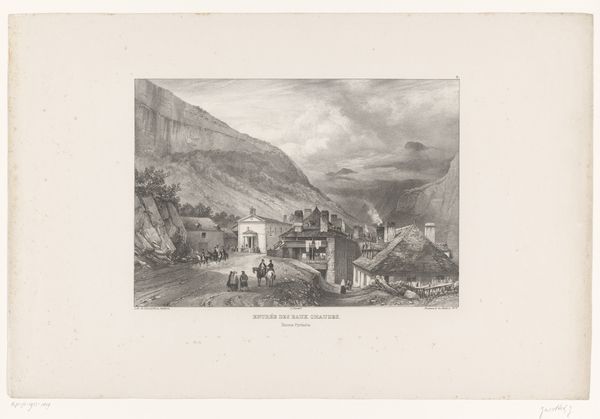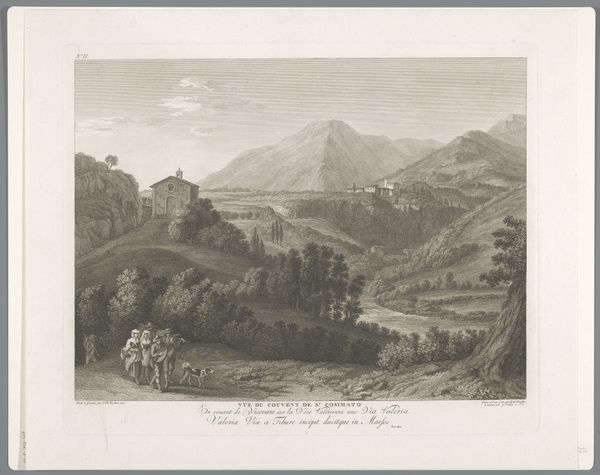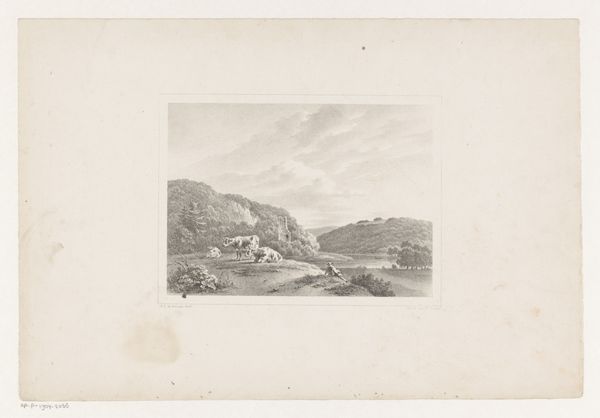
Dimensions: height 160 mm, width 235 mm
Copyright: Rijks Museum: Open Domain
Curator: Immediately, there’s something so wonderfully hushed and contemplative about this. The overall muted palette – grey against creams, charcoal against pearlescent whites – creates a distance that still draws me right in. Editor: That makes sense, actually, given the etching technique Last employed. This piece, titled “Gezicht op het Luganomeer” – View of Lake Lugano – utilizes line work to build up shadows and textures that lend a lot to the romantic landscape aesthetic he was going for. Think of the intense labor in carving out the intricate design onto a metal plate... Curator: The effect of that laborious process is mesmerizing, isn't it? Look at the softness he's achieved in rendering the light dancing on the lake's surface and how the light diffuses ever so subtly near the shore, but the mountains in the distance feel more foreboding with its sharp linework. And do you notice how the silhouetted trees almost caress the scene, creating this gorgeous vignette of nature observing itself? Editor: True, that delicate framing highlights the construction. Note, for example, how Last chose not to create a stark division, which allows him to blend near with far through the density of his lines and texture. Yet I wonder about that grouping of figures down in the left corner… How does their presence complicate Last’s seemingly pure ideal of untamed nature? Curator: I read them almost like a chorus from a Greek tragedy; figures that root us to earth amidst these vast sublime vistas. Their quiet acts, framed within nature's grandeur, elevate both. There’s this inherent dialogue happening about humanity’s place within, not separate from, our surroundings. What would a visit to Lake Lugano mean if it were devoid of such humble encounters? Editor: Okay, I hear you... Though I'm still captivated by how the original printmaking process impacts what we feel emotionally when we see the result. It all boils down to physical process of pressing that etching against paper... It really grounds Romanticism into something tactile. Curator: Exactly – a physical trace of beauty captured. Isn't it funny that contemplating its materiality then brings us back full circle to this experience of how the essence of a place can echo, even across time?
Comments
No comments
Be the first to comment and join the conversation on the ultimate creative platform.


